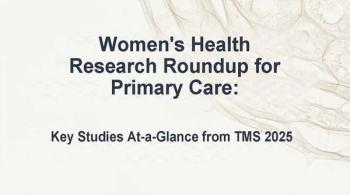
News|Articles|February 3, 2025
Stool Tests Still Top Choice for CRC Screening: Daily Dose
Author(s)Sydney Jennings
Your daily dose of the clinical news you may have missed.
Advertisement
Patient Care brings primary care clinicians a lot of medical news every day—it’s easy to miss an important study. The Daily Dose provides a concise summary of one of the website's leading stories you may not have seen.
On January 17, 2025, we reported on a study published in JAMA Network Open that examined the cost-effectiveness of and outcomes associated with noninvasive colorectal cancer (CRC) screening strategies in a population with low adherence to screening and ongoing surveillance colonoscopy.
The study
The study utilized a validated microsimulation model to project CRC screening outcomes for a simulated cohort of 10 million individuals aged 50 in 2025. This cohort represented a predominantly Hispanic or Latino population characteristic of patients served by Federally Qualified Health Centers (FQHCs) in Southern California. The screening strategies modeled included no screening, annual or biennial fecal immunochemical test (FIT), triennial multitarget stool DNA (mt-sDNA) testing, and triennial blood-based testing.
The primary outcomes assessed included CRC incidence and mortality, life-years gained (LYG) and quality-adjusted life-years (QALYs) gained relative to no screening, costs, and net monetary benefit, assuming a willingness to pay $100 000 per QALY gained.
The findings
Under realistic adherence assumptions, annual FIT emerged as the most effective and cost-effective screening strategy, yielding 121 LYG per 1000 screened individuals and a net monetary benefit of $5883 per person. Triennial blood-based screening, in contrast, was the least effective, providing only 23 LYG per 1000 and failing to meet cost-effectiveness thresholds due to negative net monetary benefit. Even in scenarios with perfect adherence, triennial blood testing (77 LYG per 1000 individuals) was outperformed by annual FIT with realistic adherence (88 LYG per 1000 individuals), demonstrating FIT’s superior balance of effectiveness and cost-efficiency in community health settings.
Authors' comments
"This study suggests that in a federally qualified health care setting, prioritizing the convenience of blood tests over less costly and more effective existing stool-based tests could result in higher costs and worse population-level outcomes. Novel screening modalities should be carefully evaluated for performance in community settings before widespread adoption."
Newsletter
Enhance your clinical practice with the Patient Care newsletter, offering the latest evidence-based guidelines, diagnostic insights, and treatment strategies for primary care physicians.
Advertisement
Latest CME
Advertisement
Advertisement
Trending on Patient Care Online
1
New ACS Guideline Endorses Self-Collected HPV Tests for Cervical Cancer Screening
2
Hepatitis B Foundation President Discusses ACIP Hepatitis B Birth Dose Recommendation
3
FDA Clears Omnipod 5 Algorithm Updates, Adding 100 mg/dL Target Glucose Option
4
Why Nearly 1 in 5 Women Experiencing Perimenopause Have Wanted to Leave Their Jobs With Bruce Dorr, MD, URPS, IFM-CP
5
























































































































































































































































































